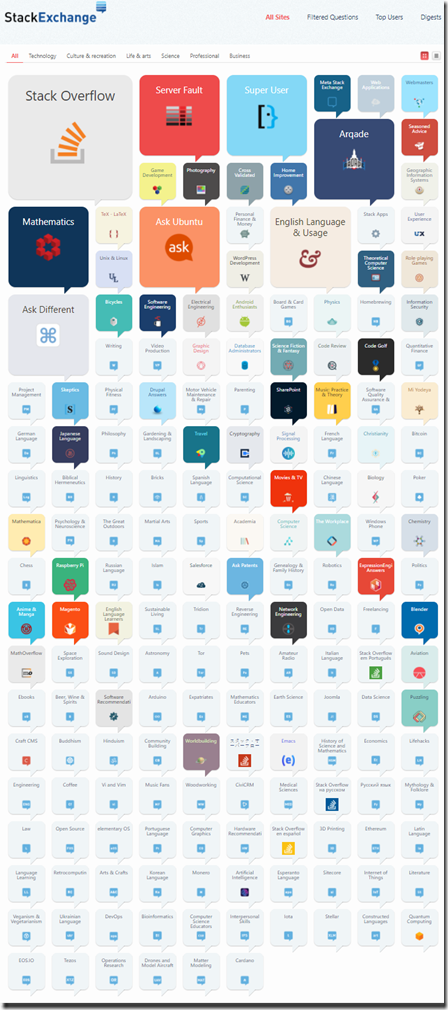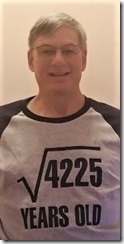My Top Programming and Genealogy Q & As - Mon, 27 Dec 2021
As I was preparing GenSoftReviews for the annual User Choice Awards that I announce on January 1st or 2nd, I realized that I hadn’t checked the site’s links in a number of years. So I started up my link checker Xenu’s Link Sleuth and let it rip. I was amazed at the number of links I needed to fix. It took me a full day to work through them.
A lot were links to sites that changed from the non-secure http prefix to the secure https prefix. This is something a website owner needs to make the effort themselves to change. Doing so is a bit of a hassle and involves obtaining an SSL (Secure Sockets Layer) certificate. it was back in 2014 when Google first recommended that sites switch to https and I finally got around to doing it for my sites in May 2020. It was good to see that quite a number of genealogy software sites have been switching over.
I also found about 25 genealogy programs whose websites were no longer available, so I marked those programs as “unsupported” and changed their link to the most recent copy of their site that was captured by the Internet Archive.
Along the way, I noticed there was a broken link in my GenSoftReviews FAQ to a question I asked on Stack Overflow that was about javascript.
Stack Overflow, the Q & A Site for Programmers
Stack Overflow was created in 2008. It quickly became the go-to site for programmers to get their questions answered and to find solutions to their problems. I joined Stack Overflow in October 2008 and I have made great use of it to help with my Delphi Development of Behold and Double Match Triangulator. There you’ll find over 129 questions that I asked and over 177 answers I provided to other people’s questions.
To encourage participation, users collect points when someone upvotes one of their questions or answers or selects their answer as the best, and they lose points when they get downvotes. The net upvotes allow the best answers to be shown first. They also allow me to unbiasedly rank my top questions and answers.
The Big Purge
After a few years of operation, Stack Overflow decided to only accept questions about programming that are tightly focused on a specific problem. Questions of a broader nature—or those inviting answers that are inherently a matter of opinion were not desired. Many of my early Qs and As, including some of my best, were of the broad type, and many of those were deleted from public view. I realized that when I saw the broken link for my question about javascript.
This is what you see now from one of these deleted questions:
On Stack Overflow, the more points you collect, the more capabilities you have on the site. I have participated in Stack Overflow enough to earn the points required to view deleted questions and answers. They don’t say how long these deletions will still be around for, so I thought it best that I save a copy of them while they are still there. Then I can fix the link in my GenSoftReviews FAQ to point to my saved version of the javascript question.
My Top Stack Overflow Questions and Answers
The deleted Q&As are among my most popular and interesting, primarily because they are of a general nature. Here are my top 3 questions:
- What’s with those Do-Not-Use JavaScript People? This had 154 upvotes, was viewed 36,000 times, and had 33 answers, but was deleted. This was the broken link question that I referred to in my GenSoftReviews FAQ page as mentioned above.
- What ever happened to APL? This had 95 upvotes, was viewed 22,000 times, and had 31 answers. It was also deleted. APL was my favorite programming language in University. Very terse! See my top answer, below.
- How Do I Choose Between the Various Ways to do Threading in Delphi? This has 65 upvotes , 8,000 views and 6 answers. It is my top question that was not deleted. It is specific to the Delphi language that I use. Threading is getting the computer to execute different sets of code at the same time.
My favorite question is likely this one:
- A Good and SIMPLE Measure of Randomness had 45 upvotes, was viewed 24,000 times and had 15 answers. I provided my own answer to my question (which not only is allowed, but is often encouraged) which was 2nd of the 15 answers with 16 votes. I accepted my own answer.
My top answers were to these questions:
- “Strangest Language Feature” received 973 votes. There were 365 answers and my answer had the 8th most votes with 325. I stated that APL’s ability to write any program in just one line which links back to this now archived amazing article and this video. This question has so far escaped the purge, but it has been locked because of being “off-topic” and could be deleted in the future.
- Delphi Profiling Tools received 23 votes. There were 10 answers. My answer received 25 votes and was the accepted answer. Profiling tools help you optimize a program to make it faster, sort of a specialty of mine since my days of chess programming. This question is still there as well, but is marked closed as it “does not meet Stack Overflow guidelines” and may be deleted in the future.
- how many delphi users over the world? received 42 votes. There were 6 answers. My answer received 22 votes and was the accepted answer. This was a fun question to try to answer. Again, this answer might be deleted.
I do understand why the Stack Overflow people are locking, closing, and deleting many of the most popular questions. It’s because the most popular ones are general, don’t require a precise answer but often the answer is just an opinion. They did attract attention, but not the sort of attention that was wanted from the site.
Stack Exchange
Stack Overflow turned out to be an overwhelming success. It has over 22 million questions asked with over 33 million answers. It gets 9.5 million visits a day and has 5,000 new questions asked each day. 16 million users have participated.
The company soon allowed the Q&A platform they developed to be used to answer questions on other subjects. They created the StackExchange website to maintain a list of all the topics covered. There are currently 177 different sites with topics ranging from Law to Hinduism to Robotics to Bicycles to Parenting to Chess.
I’m sure any person will find many topics that would interest them. My Stack Exchange profile lists the 31 topics that I have participated in.
Just for fun, these are my top question and answer on these other sites:
- My top question was Image of Webpage on Tile in Windows 10 Mobile? on the Windows Phone topic site. I found that site very useful when I still had my Windows phone. The question had 12 upvotes, was viewed 1000 times and had 2 answers.
- My top answer was to the question Are negative numbers singular or plural? which had 46 upvotes.My answer had the most upvotes (17) but was not the accepted answer which had 13 upvotes. This was on the Meta Stack Exchange site. Every topic site has its own Meta site, for discussing issues about the site itself. This question was asking if the site was displaying negative numbers properly.
Genealogy and Family History Stack Exchange
Stack Overflow worked so well for me, that I was sure it would be a great place for Q&A about Genealogy. So in 2012, I helped promote the proposal of a Genealogy Q&A site at Stack Exchange. After 58 days of getting enough interest, we did it. The Stack Exchange people created a live site for Genealogy and Family History questions and answers: https://genealogy.stackexchange.com
Over the past 9 years, the site has had 8,900 registered users ask 3,500 questions and give 5,700 answers. I have been a regular participant, supplying many answers (281) as well as a few questions (26).
My top genealogy questions have been:
- What is the Russian town in this census? (18 upvotes) – For a long time, this was one of my most perplexing genealogy mysteries, which I solved 6 months ago when I found a death record giving the answer.
- How do I write the year with a double date? (15 upvotes) – I got some really good answers on this one.
- Extract Facts from an Army Portrait (14 upvotes) – I still really would like help with this if anyone can contribute.
My top genealogy answers have been to these questions:
- How should a trip be recorded in my family tree software? My answer has 20 upvotes and was the accepted answer.
- Why haven’t more programs adopted Gramps XML free format? My answer has 20 upvotes and was the accepted answer.
- What are the key points for a beginning genealogist to consider? My answer has 19 votes and was the accepted answer.
Do you have your own Questions or Answers?
As you can see, there are a wide range of questions and answers on all sorts of topics on the Stack Exchange sites.
If you are one of my genealogy friends, I invite you to join me and thousands of others at Genealogy and Family History Stack Exchange.
If you are a programmer, join the world at Stack Overflow.
And don’t forget to check out your other interests at Stack Exchange.









 Feedspot 100 Best Genealogy Blogs
Feedspot 100 Best Genealogy Blogs





